Proposal for Interface Extension Simplification
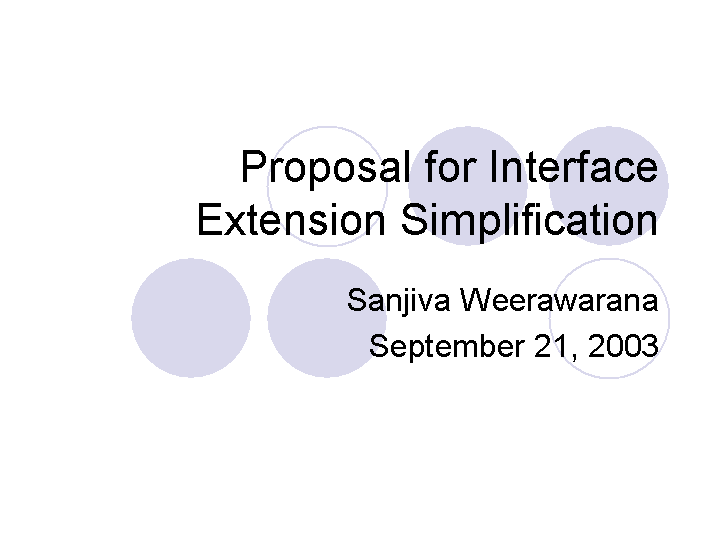
|
|
|
Sanjiva Weerawarana |
|
September 21, 2003 |
|
Summary
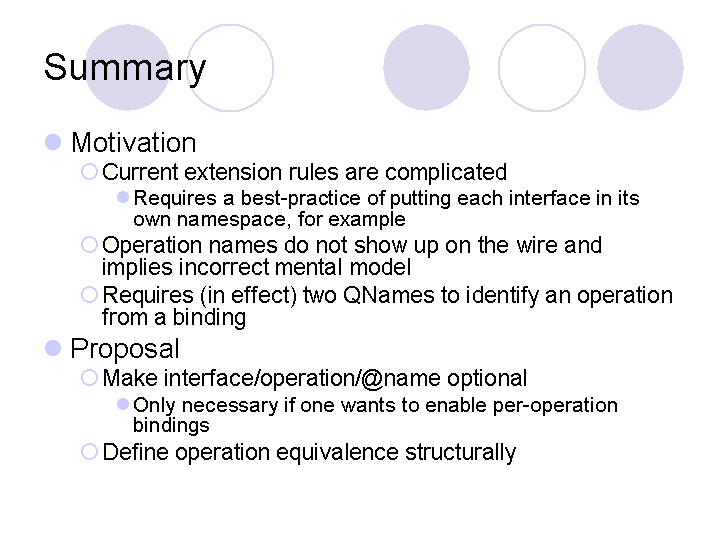
|
|
|
|
|
Motivation |
|
Current extension rules are
complicated |
|
Requires a best-practice of putting each
interface in its own namespace, for example |
|
Operation names do not show up on the
wire and implies incorrect mental model |
|
Requires (in effect) two QNames to
identify an operation from a binding |
|
Proposal |
|
Make interface/operation/@name
optional |
|
Only necessary if one wants to enable
per-operation bindings |
|
Define operation equivalence
structurally |
|
Proposal for Making "name" Optional
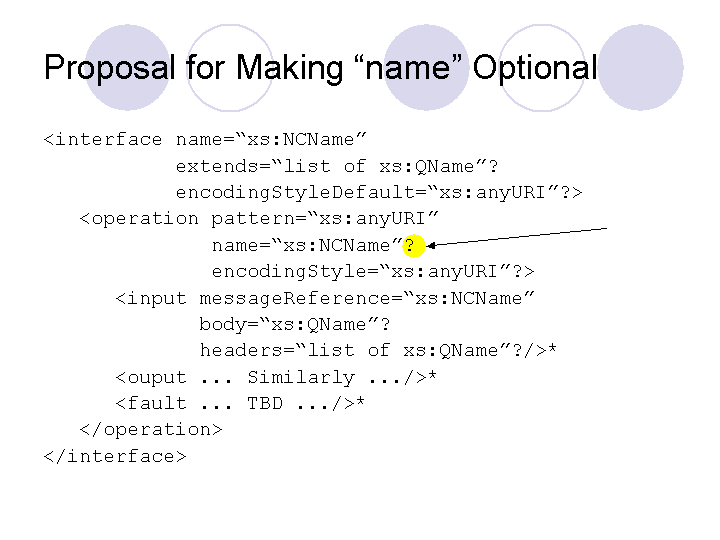
|
|
|
<interface name="xs:NCName" |
|
extends="list of xs:QName"? |
|
encodingStyleDefault="xs:anyURI"?> |
|
<operation pattern="xs:anyURI" |
|
name="xs:NCName"? |
|
encodingStyle="xs:anyURI"?> |
|
<input
messageReference="xs:NCName" |
|
body="xs:QName"? |
|
headers="list of xs:QName"?/>* |
|
<ouput ... Similarly
.../>* |
|
<fault ... TBD
.../>* |
|
</operation> |
|
</interface> |
|
Rules for Interface Extensions
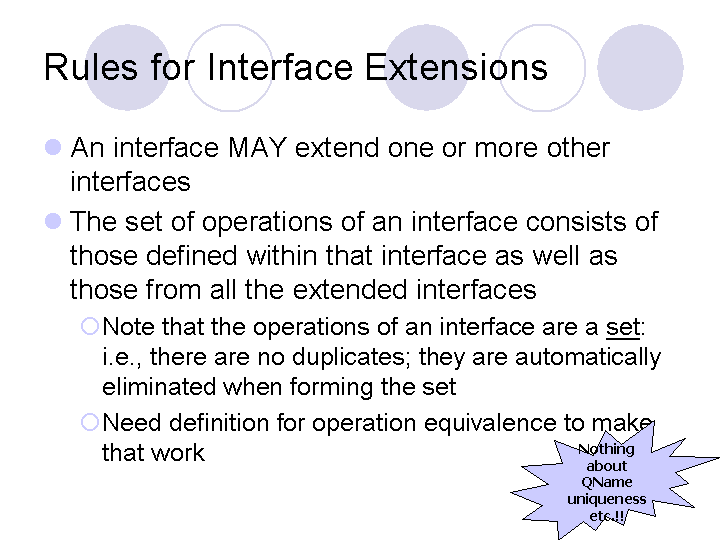
|
|
|
|
An interface MAY extend one or more
other interfaces |
|
The set of operations of an interface
consists of those defined within that interface as well as those
from all the extended interfaces |
|
Note that the operations of an interface
are a set: i.e., there are no duplicates; they are automatically
eliminated when forming the set |
|
Need definition for operation
equivalence to make that work |
|
Proposal for Operation Equivalence
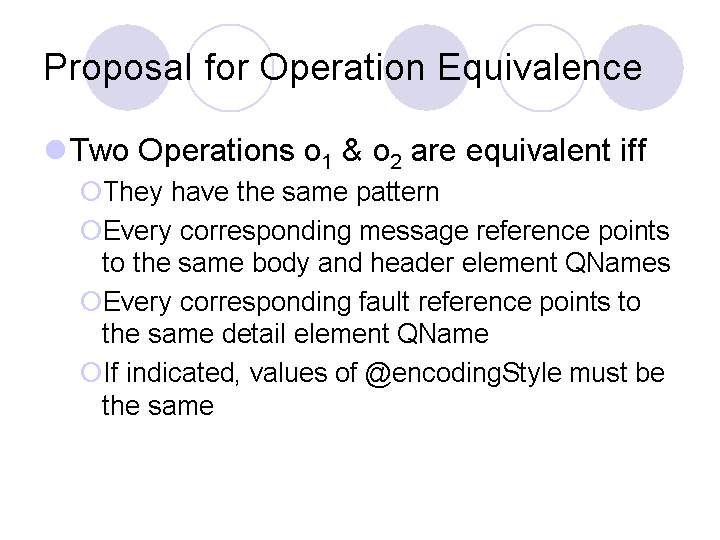
|
|
|
|
Two Operations o1 &
o2 are equivalent iff |
|
They have the same pattern |
|
Every corresponding message reference
points to the same body and header element QNames |
|
Every corresponding fault reference
points to the same detail element QName |
|
If indicated, values of @encodingStyle
must be the same |
|
Impact
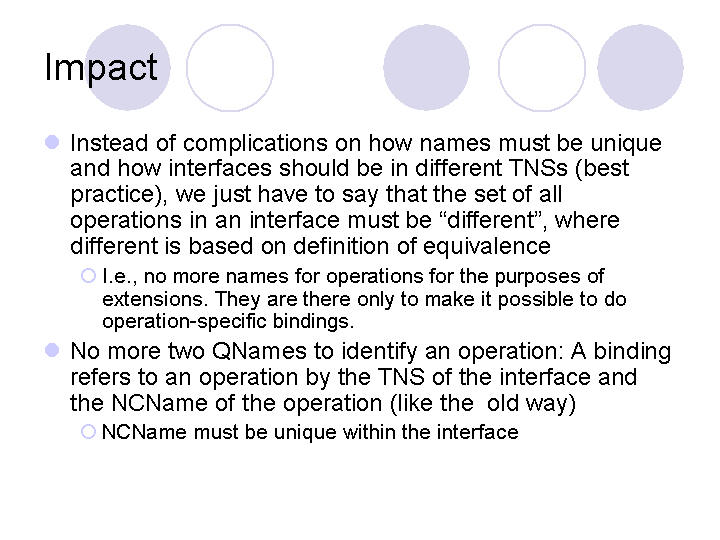
|
|
|
|
Instead of complications on how names
must be unique and how interfaces should be in different TNSs (best
practice), we just have to say that the set of all operations in an
interface must be "different", where different is based on
definition of equivalence |
|
I.e., no more names for operations for
the purposes of extensions. They are there only to make it possible
to do operation-specific bindings. |
|
No more two QNames to identify an
operation: A binding refers to an operation by the TNS of the
interface and the NCName of the operation (like the old way) |
|
NCName must be unique within the
interface |
|

 Notes
Notes




 Notes
Notes


